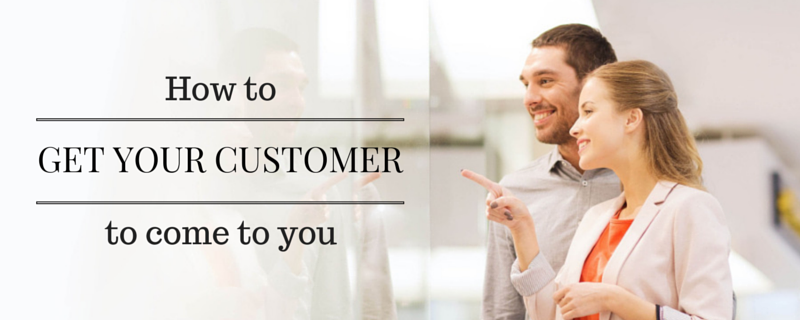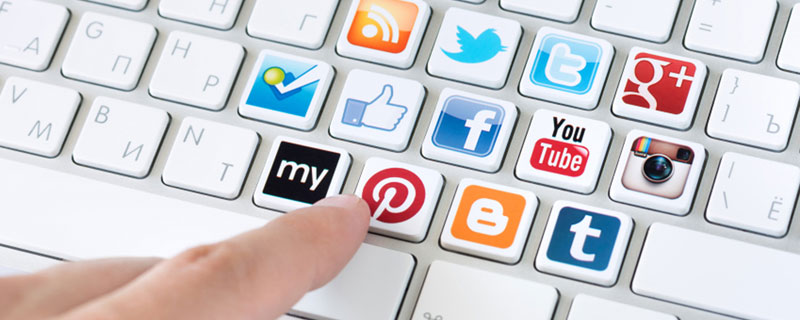BLOG
Building an Inbound Marketing Campaign
Inbound marketing campaigns are a little different than the outbound campaigns you might be more familiar with. Outbound campaigns mainly involve cold calling and direct messaging as well as advertisements on billboards, newspapers and televisions. Your message goes out to anyone that will listen to you, and it often interrupts your audience’s daily life.
Inbound marketing is more fluid and less in-your-face. Your goal is to create a relationship with buyers through online mediums such as email and social media. You provide your followers with helpful information about your industry – how to do certain tasks, what the top 10 ways to use a certain product are – and the trust you build encourages them to buy from you and become repeat customers.
So what do you need to run a successful inbound marketing campaign? Where do you even start? Before you get too involved in your campaign, check out our checklist for running a successful campaign and start planning before you hit the ground running.
Phase 1: Buyer persona(s) researched and created
Without a solidly defined buyer persona, how will you know who your campaign is targeted to? Young buyers do not interact with social media the same way older buyers do, and university students do not always check their emails at the same time as young professionals.
Creating a full buyer persona will help keep you on track as you consider different content ideas as well as social media platforms and email sending times. Take the time to create a hypothetical buyer and put yourself in their shoes. Ask yourself the questions below and answer as if you were that buyer:
- What need or want is your product or service going to fulfill?
- How will I probably first come into contact with the product (Google search, word of mouth)?
- Which social media platforms am I most active on?
- At which times of day am I checking my email and social media pages?
- What questions do I have about the industry or the company itself?
Record these answers and keep your buyer person in a place you can always see it. This will help remind you who you are writing for as you continue.
Phase 2: Sales funnel(s) defined
With each buyer person, you need to define the steps in the buyer’s purchase journey, better known as the sales funnel. These are the steps your buyers will take from their first introduction to your product to the eventual sale.
Here are the stages of the funnel:
- Awareness – Introducing your product or service to new buyers.
- Trust – Providing helpful information and knowledge to buyers through blogs, webinars, etc.
- Desire – Creating a want, not just a need, for a product.
- Sales – Selling your product or service.
- Customer Support – Assisting with questions or concerns after purchase.
- Retention/Upselling – Creating repeat buyers and upselling if possible.
There are several variations of the funnel, but this one outlines the most important aspects of your campaign. Go back and consider what kind of marketing you can use for buyers at every stage. You will probably focus primarily on awareness to build your brand, but you should also include marketing posts for other stages.
Phase 3: Website and social media sites optimised for buyers
Every audience will have keywords specific to them. As part of your campaign checklist process, you should be optimising your website and social media profiles so that when your buyers begin searching for your product or service, they are brought directly to your site.
To help you see where your particular buyers are looking, check your Google Analytics to see which pages get the most views and which pages are useful at different stages of the buying journey. Is your blog receiving a lot of hits? What can you do to provide the buyer with more helpful information?
Don’t forget to optimise your social media account profiles for better searchability. Sprinkle in some of your keywords to create consistency across multiple platforms.
Phase 4: Premium and complementary content outlined
Content plays on of the biggest roles in guiding buyers through the sales funnel. There are two types of content your will need attract buyers at different stages of the buying process.
- Premium: This type of content fulfils a certain industry-related want or need of your audience. This could be in the form of an ebook, webinar, whitepapers or guide.
- Complementary: These are free blog posts and infographics that promote premium content by briefly outlining a topic discussed in the premium content. Aim to have at least three to five blog posts to accompany any premium content.
Phase 5: Integrate promotional social media posts with regular posts
Most marketers live by the golden rule of social media marketing: the 80/20 rule. Eighty percent of social media posts should be informative and educational. The other 20 percent can be self-promotion. Followers on social media sites get bored if they feel your only goal is to market to them so it is vital that you keep your self-promotional posts in check.
That being said, you do want to promote your premium content via social media. If you are using marketing automation software, this should be easy for you. Make room in your posts for a few catchy, well-worded self-promotional posts revolving around your new premium content.
Phase 6: Outline lead nurturing campaign
Once a buyer downloads your premium content, he or she should have given you an email address. With these email addresses, outline a lead nurturing email campaign to help buyers move down the sales funnel.
Lead nurturing email campaigns build on an existing lead (the downloaded ebook) and slowly provide more information and offer assistance. Your emails will keep your company in the back of your buyers’ minds so that when they are ready to make a purchase, you are right there.
Phase 7: Implement lists and workflows using marketing automation or CMS software
Marketing automation and CMS software can make tracking leads and moving them from one phase to the next much easier. The workflows you create will trigger the next step in the sales funnel as leads move from one action to the next (liking a page, downloading an ebook).
Let’s use the ebook as an example. Once a lead downloads the ebook, their email address goes to a contact list, which sends a thank-you email. From then on, the lead receives lead nurturing emails, which supply them with plenty of information to guide them from the trust phase to the sales phase.
Most marketing automation software will help you set up social media posts and create automatic responding emails. For more in depth lead nurturing, you will need CMS software like Marketo or Hubspot.
Phase 8: Decide what success looks like
Before you begin with the campaign, you must decide on what you want a successful campaign to look like. Without doing so, you will be unable to tell what is working in your campaign and what is not.
You might want:
- A set number of new followers on a social media platform.
- A set number of new ebook downloads or webinar participants.
Once you have thoroughly outlined your campaign from start to finish, it is time to get started on writing and creating ebooks, blog posts, email campaigns and social media posts. When you finish, you will have all the tools necessary for starting a successful campaign. Be sure you are checking your metrics and KPIs daily so you stay on track. Make any tweaks and corrections if necessary.
Each step is a building block of a successful inbound marketing campaign. If you complete each step, then there is no reason why you should have not have a successful inbound marketing campaign.












